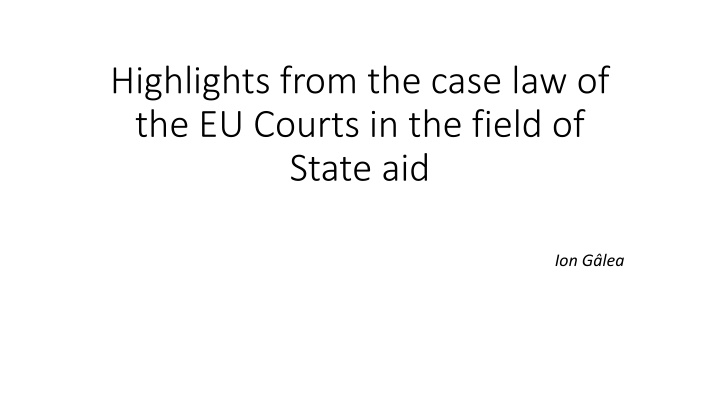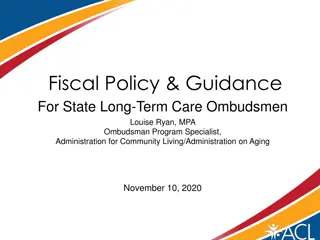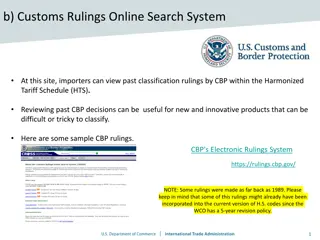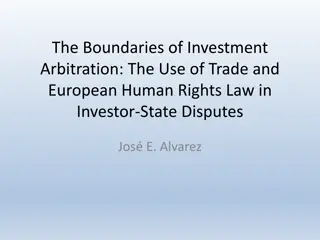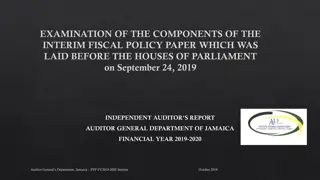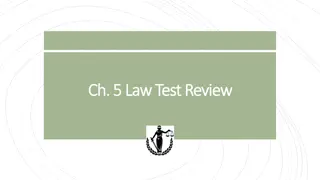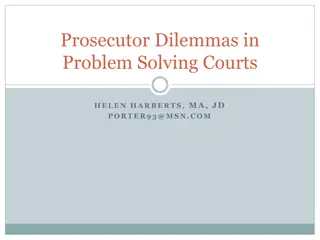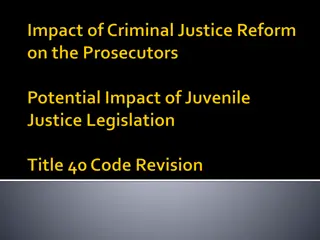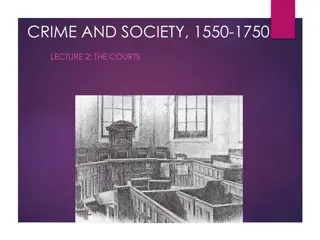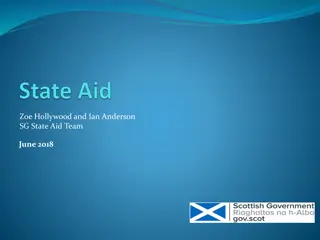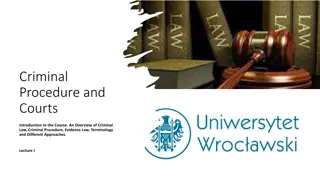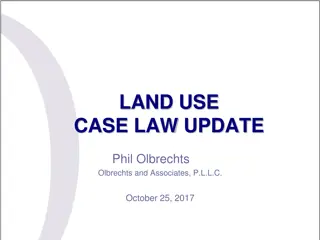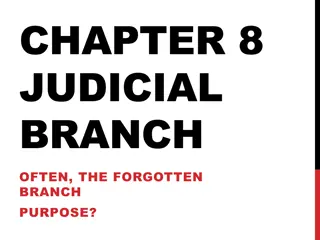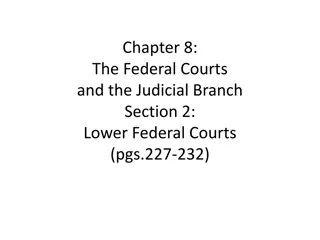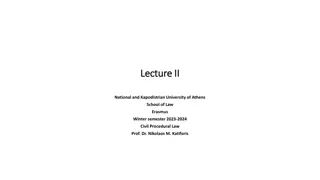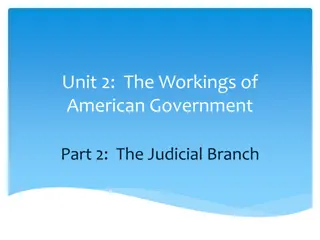EU Courts' State Aid Case Law Highlights on Fiscal Rulings
The case law of the EU Courts in the field of State aid, particularly focusing on fiscal rulings and the approach taken in assessing tax measures involving multinational companies. The case of Commission/Ireland, C-465/20P involving Apple companies, ASI and AOE, sheds light on the principles of tax allocation, profit determination, and adherence to the arm's length principle within the EU framework.
Download Presentation

Please find below an Image/Link to download the presentation.
The content on the website is provided AS IS for your information and personal use only. It may not be sold, licensed, or shared on other websites without obtaining consent from the author.If you encounter any issues during the download, it is possible that the publisher has removed the file from their server.
You are allowed to download the files provided on this website for personal or commercial use, subject to the condition that they are used lawfully. All files are the property of their respective owners.
The content on the website is provided AS IS for your information and personal use only. It may not be sold, licensed, or shared on other websites without obtaining consent from the author.
E N D
Presentation Transcript
Highlights from the case law of the EU Courts in the field of State aid Ion G lea
I. Fiscal rulings General approach - 3 steps: I. establish the reference system, that is the normal tax system applicable in the Member State concerned; II. demonstrate that that the tax measure at issue is a derogation from that reference system, in so far as it differentiates between operators who, in the light of the objective pursued by that system, are in a comparable factual and legal situation. III. verify if the MS concerned is able to demonstrate that that differentiation is justified, in the sense that it flows from the nature or general structure of the system of which those measures form part.
Judgment of 10 September 2024, Commission/Ireland, C-465/20P 1991 and 2007 IE authorities issued tax rulings concerning 2 Apple companies, ASI and AOE, incorporated in IE, but not tax resident. ASI and AOE had Irish branches, without legal personality ASI and AOE were bound by a cost-sharing agreement with Apple Inc. Tax rulings: COM considered that IP licences held by ASI and AOE for distribution and sale of Apple products had contributed to income.
Commission/Ireland, C-465/20P Decision of COM: - primary line of reasoning advantage - by not allocating to the branches of those companies the profits generated by the exploitation of the Apple Group s IP, thereby acting in breach of the arm s length principle. - as a subsidiary point, the profit allocation methods approved by the contested tax rulings had, in any event, resulted in the annual chargeable profits for ASI and AOE in Ireland departing from a reliable approximation of a market-based outcome in line with the arm s length principle.
Decision of COM The reference framework consisted of the ordinary rules of corporate profit in Ireland, the objective of which is to tax the profits of all companies subject to tax in Ireland, whether resident or non-resident. Section 25 of Taxes Consolidation Act 97 did not provide guidance on how to determine the chargeable profit of an Irish branch. A profit allocation method was needed. Regardless the incorporation in Irish law, article 107 (1) required that this allocation should be consistent with arm s length principle. Aim: intra-group transactions are treated in the same way as those carried out between non-integrated companies.
Commission/Ireland, C-465/20P General Court (T-778/16 and T-892/15) - COM made errors concerning the application of section 25 of TCA 97, of the arm s length principle and of the OECD Approach; - COM has not succeeded in showing that, in the light, first, of the activities and functions actually performed by the Irish branches of ASI and AOE and, secondly, of the strategic decisions taken and implemented outside of those branches, the profits generated by the exploitation of the Apple Group s IP licenses should have been allocated to those branches.
Commission/Ireland, C-465/20P Court: annuls GC judgement for: - distortion of the content of the contested decision; - breach of procedure (inadmissible evidence); - contradictory reasoning (correctly identified the test applicable under Irish law allocation of assets, functions and risks between branch and other parts of that company , but applied it to the allocation between the branches and the parent company. And ruled on merits.
Commission/Ireland, C-465/20P 1st step: Normal regime: no error, as determined by the GC; not contested under appeal; 2nd step: COM has demonstrated that those tax rulings have the effect that ASI and AOE enjoy favourable tax treatment as compared to resident companies taxed in Ireland which are not capable of benefiting from such advance rulings, that is, in particular, 1) non-integrated standalone companies, 2) integrated group companies that carry out transactions with third parties or 3) integrated group companies that carry out transactions with group comanies with which they are linked by fixing the price of those transactions at arm s length, even though those companies are in a comparable factual and legal situation as regards the objective of the reference system, which is to tax profits generated in IE. 3rd step: No justification put forward.
Comparison to: Jugdment of 14 December 2023, Commission/Luxembourg e.a., C-457/21P - Amazon pursued its commercial activities in Europe through 2 companies: LuxSCS and LuxOpCo. The latter was owned by the former. - LuxSCS obtained from US entities IP rights. It concluded a licence agreement with LuxOpCo for IP, the latter paid royalties. - Tax ruling: i) LuxSCS was not subject to tax; ii) endorsed the method of calculating the annual royalty. Court: the arm s length principle cannot be applied TFEU unless it is recognised by the national law concerned and in accordance with the rules defined by the latter. Therefore, the GC erred in law in finding that the Commission could, in a general manner, apply the arm s length principle, without stating that that institution was required, as a preliminary step, to satisfy itself that that principle was incorporated into Luxembourg tax law.
Judgement of 19 Sept. 2024, UK/Commission e.a., C-555/22P, C-556/22P, C-564/22P Measure at isssue: - under the UK corporation tax system, companies are taxed on their profits arising from UK activities and assets. Profits of foreign companies which are redistributed in the UK are not taxed; - rules applicable to controlled foreign companies (CFCs) determine whether profits of a CFC can be regarded as having been artificially diverted from the UK and are therefore taxed by a specific charge; - exceptions at issue for taxable non-trading finance profits arising from loans between non-resident members of a multinational group.
C-555/22P, C-556/22P, C-564/22P, United Kingdom/Commission e.a. Commission (2019): exceptions at issue are incompatible State aid General Court (T-363/19, T-456/19) dismissed the action, confirming the selective advantage. Reference framework = fiscal rules applicable to CFCs UK argued that the reference framework comprises fiscal rules applicable to all companies, not only CFCs.
C-555/22P, C-556/22P, C-564/22P, United Kingdom/Commission e.a. when determining the reference framework, COM is in principle required to accept the interpretation of the relevant provisions of national law given by the MS, provided that that interpretation is compatible with the wording of those provisions. COM may depart from that interpretation only if it is able to establish, on the basis of reliable and consistent evidence, that another interpretation prevails in the case-law or the administrative practice (para. 97-98) UK argued that the general rules on taxation of companies and rules applicable to CFCs are inseparable.
C-555/22P, C-556/22P, C-564/22P, United Kingdom/Commission e.a. Court: COM does not have case-law or an administrative practice of the MS concerned which substantiates its own interpretation of the national law, and where that MS informed it, during the administrative procedure, that there is no such case-law or practice, that interpretation can prevail over that advocated by that MS only if the COM is able to demonstrate that the MS s interpretation is incompatible with the wording of the relevant provisions . Court: interpretation of MS is not incompatible with relevant provisions Therefore, the reasoning of the GC and of the Commission related to the general framework was vitiated by an error of law.
Comparison to: Judgment of 5 December 2023, C-451/21P, C-454/21P Luxembourg e.a./Commission Errors: COM not able to establish that, with regard to the interpretation of relevant provisions, an interpretation prevailed in Luxembourg law other than that put forward by Luxembourg, which was compatible with the wording + failure to take into account administrative practice.
II. Market Economy Operator 10 April 2024, Danske Slagtermestre/Commission, T-486/18 RENV By a law adopted in 2013, Denmark replaced the system under which there was a single charge per m3of water for all water consumers connected to the same waste water treatment plant with a degressive staircase model providing for a rate on the basis of the volume of waste water discharged. This new pricing model provides for a reduction in the rate per m3from a certain volume, with the effect of reducing the charges payable by the biggest consumers.
T-486/18 RENV, Danske Slagtermestre/COM Danske Slagtermestre, a trade association of butcher s shops, slaughterhouses etc., brought a complaint before COM alleging that the 2013 law had granted State aid to large slaughterhouses. By decision of 19 April 2018, COM held that the staircase model introduced by the 2013 law did not confer any special advantage on specific undertakings and did not constitute State aid, as a market economy operator would also have implemented the staircase model.
T-486/18 RENV, Danske Slagtermestre/COM General Court: - it was for COM to determine whether the undertakings that benefited from reduced tariffs would have obtained a comparable advantage from a normally prudent and diligent private operator, particularly taking account of its prospects for profitability. COM applied, for the purposes of that examination, the ex ante profitability analysis method set out in paragraph 228 of its Notice on the notion of State aid. In accordance with that paragraph, COM was required to examine, for the specific undertaking connected to a waste water treatment plant, whether the contribution paid under the staircase pricing model was capable of covering the costs arising from its use of the infrastructure in question.
T-486/18 RENV, Danske Slagtermestre/COM 1) COM based its examination solely on average data on total costs and revenues of 6 out of the 98 Danish municipalities. It failed to have regard to paragraph 228 of its Notice and, consequently, to the limits which it imposed on its discretion in adopting that notice. 2) even COM could have applied the ex ante profitability analysis method without carrying out an examination of each user, it should have been able to verify that the staircase model made it possible to allocate to users the marginal costs. Yet, all the costs which were not linked to the quantity of water consumed were considered to be fixed costs and, therefore, shared among all users, even if such costs existed merely because of the presence of a specific user.
T-486/18 RENV, Danske Slagtermestre/COM 3) COM found that the discounts introduced by the staircase pricing model could comply with the MEO principle on the sole condition that the contribution for the treatment of waste water covered the costs incurred by the operators no analysis of prospect of profitability. 4) risk that the largest water consumers would choose to disconnect from the centralized waste water treatment network such risk was hypothetical and not sufficiently substantiated.
MEO principle rarely applied to a general measure Judgment of 6 October 2021, Covestro Deutschland/COM, T-745/18, (appeal rejected by judgment of 26 September 2024, C-790/20P, C- 791/21P) Measure: consumers from network charges. exception for on-going/continuous charge electricity GC: - exemption at issue was adopted by the State in its capacity as a public authority and that the MEO principle is not applicable in the present case.
